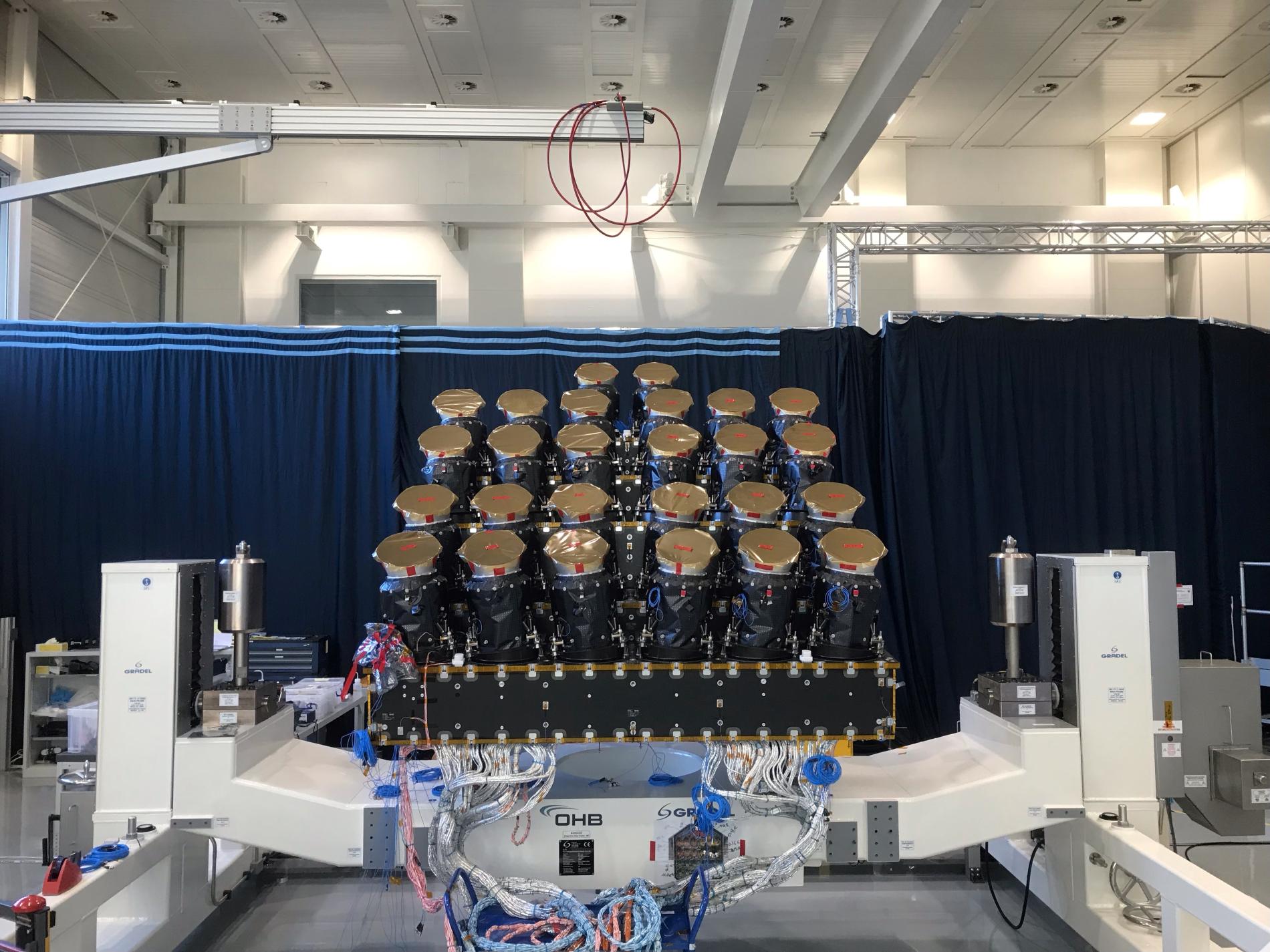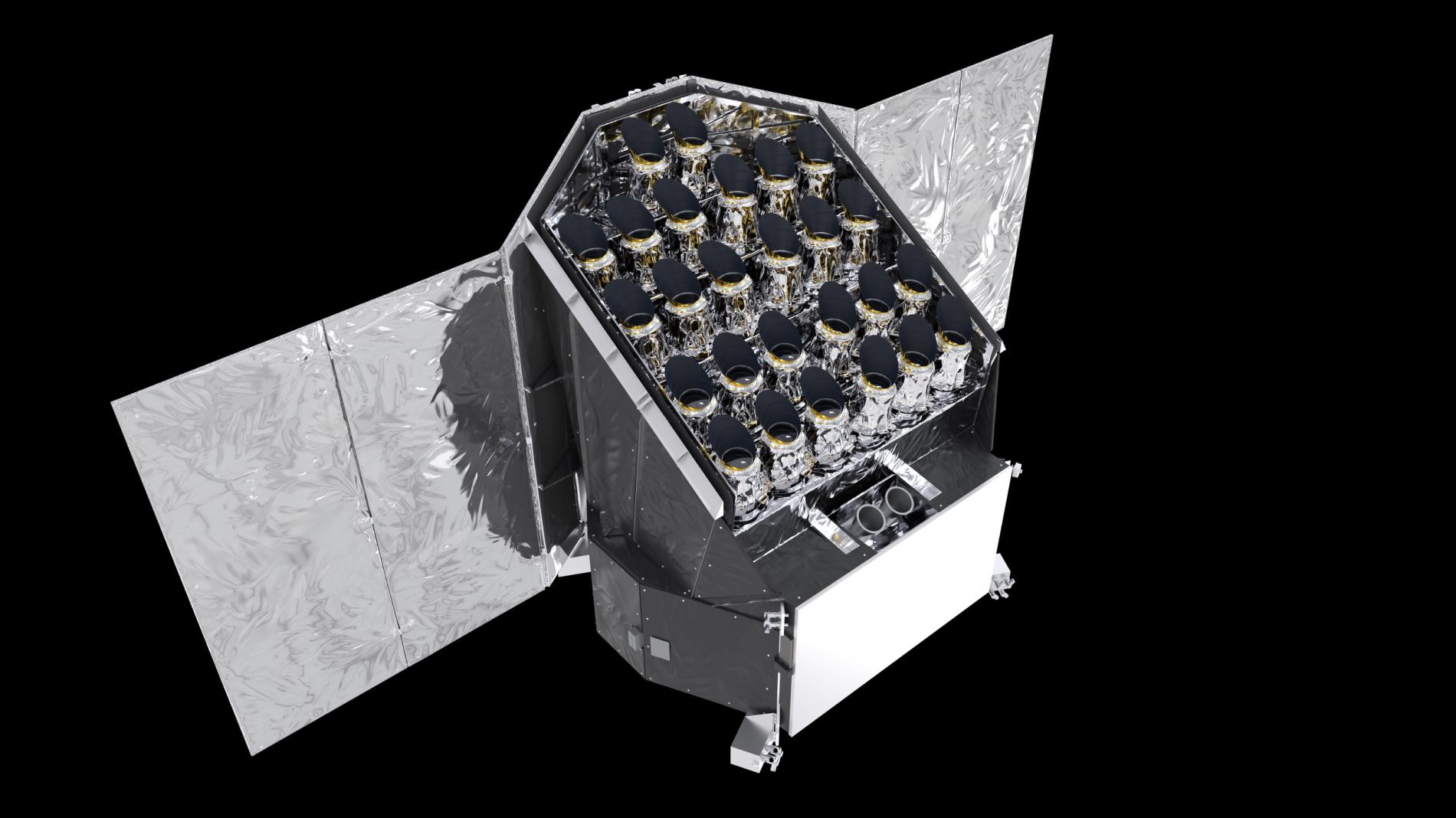The IAA participates in PLATO, the first scientific mission to fly aboard the new European rocket Ariane 6
On January 29, during the European Space Conference in Brussels (Belgium), the European Space Agency (ESA) signed an agreement with the space transportation company Arianespace to launch its PLATO mission at the end of 2026
The Instituto de Astrofísica de Andalucía (IAA-CSIC), a member of the PLATO Spain consortium, is participating in the mission through the development of its two main electronics units and the scientific planning prior to its launch
Over the past 15 years, high-precision photometric space missions, developed by the world's leading space agencies, have driven significant advances in stellar physics and exoplanetary science. In this context, ESA's innovative PLATO (PLAnetary Transits and Oscillations of Stars) mission has been designed to discover potentially habitable planets around stars similar to our Sun. Its goal is to study thousands of exoplanets in detail, with a special focus on terrestrial-type planets—rocky worlds composed mainly of silicon, oxygen, and metals—in contrast to gas giants such as Jupiter or Saturn.
"PLATO will enable the study of Earth analogs and lay the scientific foundation for understanding planetary systems like our own," says Dr. Javier Pascual, head of the Stellar Variability Group at the Instituto de Astrofísica de Andalucía (IAA-CSIC) and a member of the PLATO Spain consortium.
The planet hunter PLATO will be the first scientific mission to travel aboard Ariane 6, Europe’s new heavy-lift rocket, equipped with two boosters that will enable its launch from the European Spaceport in French Guiana at the end of 2026. The vehicle will be placed in orbit around the Lagrange Point L2 of the Sun-Earth system, 1.5 million kilometers from the launch site.
"Ariane 6 is a next-generation rocket incorporating the latest aerospace technologies aimed at better space debris management. From an aerospace industry perspective, PLATO will be pioneering in many aspects," explains Dr. Pascual (IAA-CSIC).

The Ariane 6 rocket, developed by ESA, with its Member States and industrial partners led by ArianeGroup, succeeds Ariane 5, the most reliable and competitive launcher for decades. This launcher will guarantee Europe safe and autonomous access to space, so that it is not dependent on the capabilities and priorities of other nations. Credits: ESA
To fulfill its mission, PLATO will use 26 cameras to simultaneously observe more than 200,000 stars in search of planets orbiting them. The mission will employ the transit method, which involves detecting the dimming of a star's light when a planet passes in front of it. By analyzing this dimming, scientists can determine a planet’s size, mass, and density. PLATO's scientific instrumentation results from collaboration between ESA and the PLATO Mission Consortium, a partnership that includes research centers, institutes, and European industries.

The PLATO payload module in the clean room of OHB System AG. Note the relative pointing of each group of 6 N-Cam cameras and the two F-Cams in the top position. Credits: OHB
SPAIN, A KEY PLAYER IN THE PLATO MISSION
Spain plays a key role in the PLATO mission, providing the onboard computers that will process all images and scientific data, as well as the thermomechanical structures of the 26 cameras and the thermal vacuum calibration of 10 of them. Additionally, Spain contributes to the development and implementation of new tools for analyzing and processing the data the satellite will generate during the four years following its launch, scheduled for late 2026.

Artistic representation of the ESA PLATO mission. Credits:ESA/ATG medialab
The PLATO Spain consortium includes members from seven leading national research centers: Instituto de Astrofísica de Andalucía (IAA-CSIC), Instituto de Astrofísica de Canarias (IAC), Centro de Astrobiología (CAB-CSIC/INTA), Instituto Nacional de Técnica Aeroespacial (INTA), Instituto de Ciencias del Espacio (ICE), Universidad de Granada (UGR), and Universidad de Valencia (UV).
Specifically, the IAA-CSIC, through its Instrumental and Technological Development Unit (UDIT), is responsible for developing the two main electronics units (MEU). Their work spans from the first prototypes and structural, engineering, and qualification models to the final models that will fly in 2026. The MEU not only receives information from PLATO’s 24 normal cameras but also processes the images and sends the data to the instrument's central computer.
“We have been working on the PLATO MEU for ten years and currently the flight models are being integrated at Thales Alenia Space España, Madrid, we have achieved a team with great experience to be able to continue with the next space missions” highlights the principal investigator and head of the PLATO MEUs, Dr. Julio Rodríguez Gómez (IAA-CSIC).
Additionally, the Stellar Variability Group at IAA-CSIC is involved in the scientific development prior to the mission, with several research lines that include innovative data analysis techniques, advanced stellar models, and artificial intelligence. Their goal is to enable large-scale data processing for creating theoretical stellar and planetary models. Furthermore, IAA-CSIC researchers advocate for an open science system, ensuring that mission data and its processing are accessible to the entire scientific community.
"To address the challenges in interpreting the data of pulsating stars, it is essential to use mathematical and computational tools that go beyond traditional methods and to ensure that results are fully reproducible by the community," emphasizes Javier Pascual (IAA-CSIC).

Lagrange points of the Sun-Earth system. PLATO will orbit the L2 point 1.5 million kilometers from Earth. Credits: ESA
ARIANE 6: THE LAUNCH VEHICLE POWERING THE MISSION
Ariane 6 completed its maiden flight in July of last year, with its second launch scheduled for next March, followed by an increasing number of missions in the coming months. This heavy-lift rocket, Europe’s latest, has been designed to offer high power and flexibility at a lower cost than its predecessors. Its configuration, which includes an improved main stage, the option of two or four powerful boosters, and a new restartable upper stage, enhances efficiency and versatility for a wide range of missions.
The PLATO project builds on the legacy of the CoRoT mission (Convection, Rotation, and Planetary Transits, 2006-2013), led by the French Space Agency (CNES) and ESA. CoRoT was the first space mission dedicated to the search for exoplanets and the study of asteroseismology, the science that analyzes the oscillations and vibrations of stars.
"The experience gained from studying exoplanets and stellar pulsations through missions like CoRoT, in which our group at IAA-CSIC led the Spanish contribution, is crucial for meeting the challenges of a mission like PLATO, which aims to establish a solid foundation for the study of exo-Earths. At the same time, PLATO will serve as a bridge to future missions such as ARIEL, which, aboard an Ariane 6 and also positioned at L2, will characterize the atmospheres of exo-Earths discovered and analyzed by the PLATO scientific consortium," concludes Dr. Pascual (IAA-CSIC).
- ‘Planet hunter Plato to fly on Ariane 6’
- https://www.esa.int/Science_Exploration/Space_Science/Plato/Planet_hunter_Plato_to_fly_on_Ariane_6
- Javier Pascual Granado- javier@iaa.es
- Julio Rodríguez Gómez - julio@iaa.es
- Sebastiano de Franciscis (Responsable de Comunicación del Consorcio Plato España) - sebas@iaa.csic.es
- Instituto de Astrofísica de Andalucía (IAA-CSIC)
- Unidad de Divulgación y Comunicación
- Amanda López – alm@iaa.es
- Emilio García – garcia@iaa.es - 649 407 445 (vía whatssap)
- Celia Navas - navas@iaa.es
- https://www.iaa.csic.es
- https://divulgacion.iaa.csic.es

